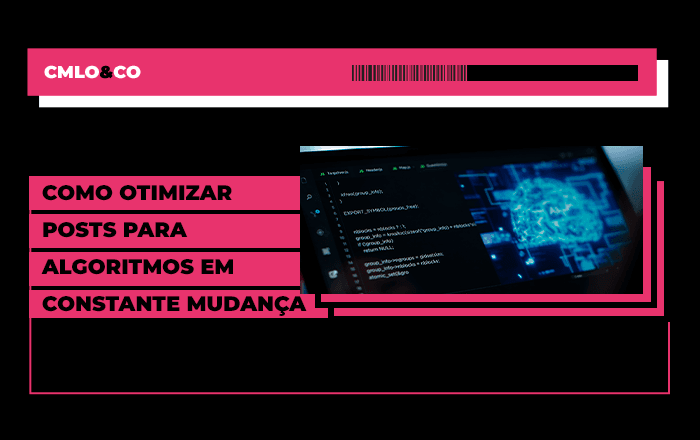Have you ever heard of interactive webinars? They are a way of presenting content online, live or recorded, which allows interaction between the speaker and the audience. The interactive webinars are a powerful tool for educating, engaging and converting potential customers, as they offer the opportunity to create a personal connection and generate value.

In this article, we'll explain what they are interactive webinarsWhat are they for, what are the advantages of using them to increase sales and what are the best strategies for selling more with them? Check it out!
What are interactive webinars?
Webinars are online seminars that can be broadcast live or recorded, with the aim of sharing relevant information on a specific topic. They can be used for various purposes, such as educating the market, demonstrating products or services, generating leads, increasing brand awareness, among others.
Interactive webinars are those that allow the audience to participate actively, using resources such as chat, polls, questions and answers, quizzes and surveys.
These features make the webinar more dynamic, interesting and personalized, as they allow the presenter to adapt the content according to the needs and interests of the viewers.
What are they for?
Interactive webinars serve several purposes, but one of the main ones is to generate sales. That's because they allow you to:
- Attract the attention of potential customers who are interested in your topic;
- Educate your audience about your market, problem and solution;
- Show your authority and credibility on the subject;
- Create a relationship of trust with your leads;
- Generate value and desire for your product or service;
- Guide your leads through the sales funnel to the decision to buy;
- Make irresistible offers and close deals.
Advantages of interactive webinars to increase sales
Interactive webinars offer several advantages for those who want to sell more online. Here are some of them:
- Low cost: you don't need to invest in physical infrastructure, travel or printed materials to hold a webinar. All you need is a computer, a camera, a microphone and an online streaming platform;
- Global reach: you can reach people anywhere in the world who have internet access and an interest in your topic. This expands your potential market and your chances of making a sale;
- Flexibility: you can choose the best time, format and duration for your webinar, according to your audience and objective. You can also record the webinar and make it available later for those who couldn't attend live;
- Scalability: you can reach many people with a single webinar, without losing the quality or personalization of the content. You can also automate the registration, confirmation, reminder and follow-up process for participants;
- Conversion: you can take advantage of the moment when your audience is most engaged and receptive to make an irresistible offer and encourage the immediate or future purchase of your product or service.

8 strategies to sell more with interactive webinars
Now that you know what interactive webinars are, what they're for and the advantages of using them to increase sales, let's take a look at some practical strategies for selling more with them. Check them out:
1. Plan the webinar content in advance
The first step to holding a successful interactive webinar is to plan the content in advance. You need to define the objective of your webinar, the main message you want to convey, the profile of your target audience, the ideal duration of the event, the resources you are going to use and how you are going to structure the script.
Content planning is essential to ensure that your webinar is relevant, interesting and coherent. It also helps to avoid unforeseen technical failures that could compromise the quality of the event.
2. Choose the right type of webinar
There are various types of webinars you can do, depending on your objective, audience and stage of the sales funnel. Some examples are:
- Educational webinar: a webinar that teaches the audience something, such as a tip, a technique or a new tool. It serves to generate value, educate the market and generate qualified leads;
- Demonstration webinar: a webinar that shows how your product or service works, how it solves the audience's problem and what its differentials are. This type of webinar serves to generate desire, show proof and convert leads into customers;
- Launch webinar: announces something new, such as a new product, service or feature in an existing product. The launch webinar serves to generate curiosity, anticipation and urgency and stimulate immediate purchase;
- Interview webinar: a webinar in which a guest who is an expert on the subject talks to you and shares their experience and knowledge. It serves to generate authority, credibility and trust and attract a larger audience.
3. Segment your target audience
To create an effective interactive webinar, you need to know your target audience well and segment them according to their characteristics, needs and interests. This way, you can personalize your contentIt has a language and an offer for each group of people.
Segmentation strategies are wide-ranging. You can, for example, segment your audience by age, gender or location. But you can also segment your audience by profession, income, behavior and preferences. Or you can segment your audience by the stage of the sales funnel they are in: top (awareness), middle (consideration) or bottom (decision).
The fact is that the more segmented your audience is, the easier it will be to reach them with the right message and generate more conversions.
4. Promote the webinar
There's no point in holding an incredible interactive webinar if nobody knows it exists. That's why you should publicize your webinar in advance and use various channels to attract as many people as possible.
Some channels you can use to publicize your webinar are:
- E-mail marketing: you can send emails to your contact list inviting them to register for your webinar. You should send at least three emails: an invitation email, a reminder email and an urgency email;
- Social networks: you can post on your social networks about your webinar and encourage your followers to sign up. You can also use paid ads to reach a larger, more targeted audience;
- Blog: you can write an article on your blog about the topic of your webinar and link to the registration page at the end. You can also use banners or pop-ups to attract readers' attention;
- Partners: you can partner with other people or companies that are related to your topic or audience and ask them to promote your webinar to their audience. You can offer something in return, such as a commission or participation in your webinar.
5. Partner with influencers
Another strategy to sell more with interactive webinars is to make partnerships with digital influencers who have authority and credibility in your niche market. Influencers can help spread the word about your webinar to their loyal and engaged audience, increasing your reach and reputation.
You can invite influencers to take part in your webinar as interviewees, co-presenters or moderators. You can also ask them to share your webinar on their social networks or send an email to their contact list.
To make a good partnership with influencers, you should choose those who have an affinity with your topic and audience, offer something of value in exchange for the collaboration and make the rules and expectations of the partnership clear.
6. Use mental triggers
Mental triggers are stimuli that activate our brains and lead us to take a decision or action. They are widely used in marketing and sales to persuade and convince people to buy a product or service.
You can use mental triggers in your interactive webinar to engage your audience and sell more. Some examples of mental triggers are:
- Scarcity: consists of showing that your product or service has a limited quantity or time, generating a sense of urgency and fear of losing the opportunity;
- Social proof: shows that other people have already bought or approved your product or service, generating a sense of validation and trust;
- Authority: indicates that you are an expert or reference on the subject, generating a sense of respect and credibility;
- Reciprocity: consists of offering something of value to your audience, generating a sense of gratitude and obligation;
- Story: ideal for telling a story that engages your audience, generating a sense of identification and emotion.
7. Interact with your audience
The main advantage of interactive webinars is the possibility of interacting with your audience. That's why you need to take advantage of this opportunity to create a connection with your viewers and increase the engagement of the event. Some ways to do this are:
- Ask open or closed questions to better understand the profile, needs and opinions of the participants;
- Answer questions and comments from viewers, showing that you are attentive and interested in what they have to say;
- Conduct polls, quizzes or votes to test participants' knowledge or preferences on a subject;
- Ask for feedback or evaluations on the content or quality of the webinar, showing that you care about the satisfaction of the participants;
- Use giveaways or exclusive promotions to reward participants for attending or participating in the webinar.
8. Monitor the results of your interactive webinar
Finally, you need to monitor the results of your campaign. This is important for evaluating the performance of your webinar, measuring the return on investment (ROI) and identifying points for improvement.
To monitor the results of your campaign, you can use indicators such as:
- Number of registrants and participants;
- Conversion rate of leads into customers;
- Retention and drop-out rates;
- Level of audience satisfaction and engagement;
- Number of views, likes, shares and comments;
- Revenue generated by the webinar.
Conclusion
As we presented in this article, interactive webinars are an excellent way to engage your audience and sell more. They allow you to share valuable content, generate authority and build relationships with your audience.
But to make a successful interactive webinar, you need to plan the content in advance, interact with your audience and monitor the results of your campaign. The good news is that you don't have to do everything yourself. You can count on marketing and advertising specialists to create successful strategies to engage the audience and sell more.
Did you like this article? Then share it with your friends on social media and leave your comment below. And if you want to learn more about interactive webinars and access successful strategies, contact CMLO&CO and find out how we can help you.







